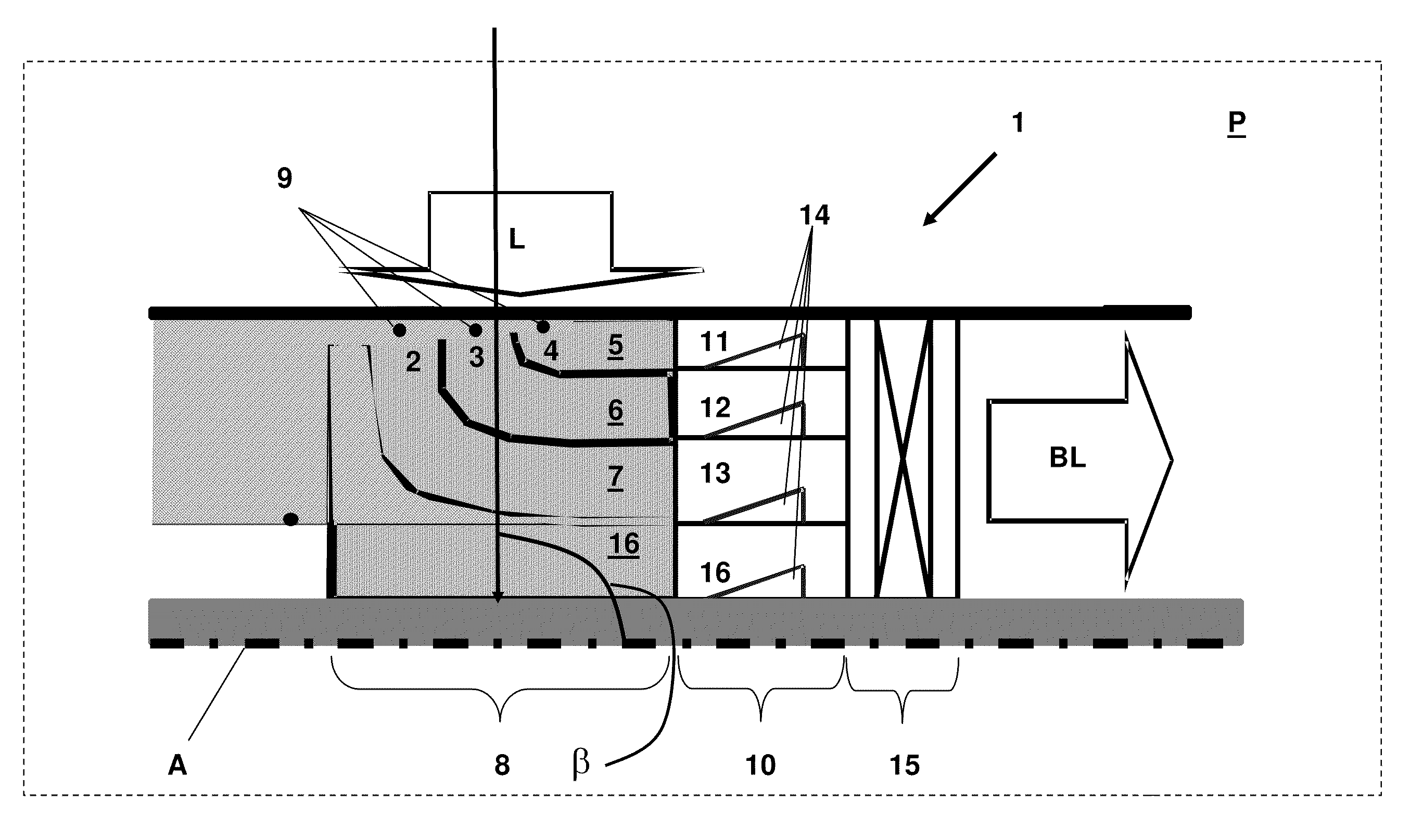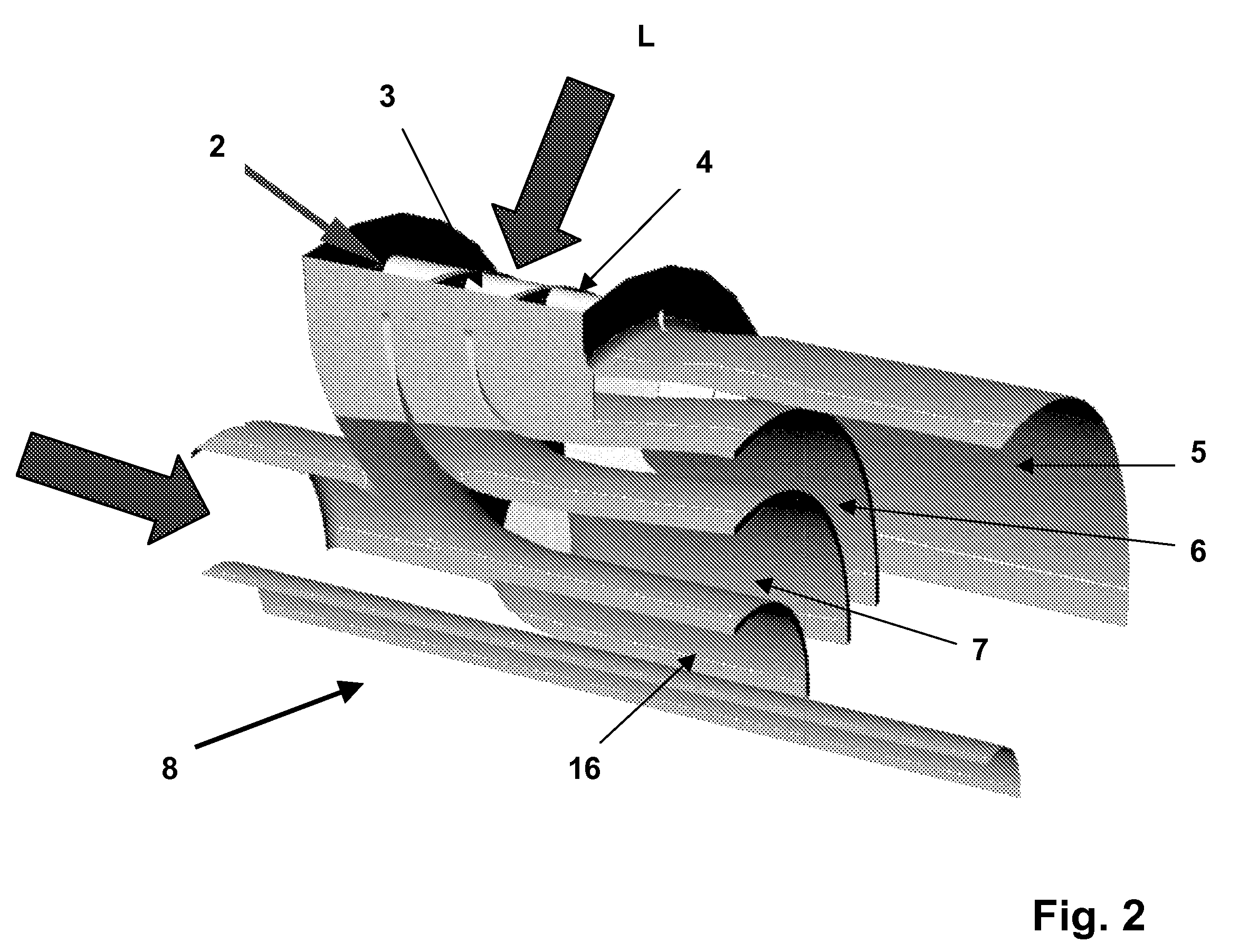Mixer assembly
a technology of mixing and assembly, which is applied in the direction of combustion types, separation processes, lighting and heating apparatuses, etc., can solve the problems of inhomogeneity along the flow profile, inability to achieve any desired compact construction, and inability to meet the requirements of mixing and making available such fuel-air mixtures. , to achieve the effect of increasing the risk of spontaneous ignition, high integratability, and uniform velocity profil
- Summary
- Abstract
- Description
- Claims
- Application Information
AI Technical Summary
Benefits of technology
Problems solved by technology
Method used
Image
Examples
Embodiment Construction
[0032]The mixer assembly, which is schematically shown in FIG. 1, shows the upper half of a flow-through component 1, which is otherwise rotationally symmetrically formed, which is intersected by an axis A. It is assumed that the mixer assembly, which is formed as a flow-through component 1, is located inside a plenum P into which is injected air which is compressed by means of a compressor unit (not shown), which air flows basically radially to the axis A through air inlet openings 2, 3, 4 into the flow-through component. Flow passage sections 5, 6, 7 are connected directly downstream to the air inlet openings 2, 3, 4, along which flow passage sections the partial flows are deflected by 90° from their originally radially oriented flow direction. The flow deflecting region 8, therefore, is able to distribute the total air flow L, which acts radially upon the flow-through component 1, both into partial flows and also to deflect it by 90° into an axially oriented flow direction. For f...
PUM
| Property | Measurement | Unit |
|---|---|---|
| 90°≦β≦180 ° | aaaaa | aaaaa |
| wedge angle | aaaaa | aaaaa |
| wedge angle | aaaaa | aaaaa |
Abstract
Description
Claims
Application Information
 Login to View More
Login to View More - R&D
- Intellectual Property
- Life Sciences
- Materials
- Tech Scout
- Unparalleled Data Quality
- Higher Quality Content
- 60% Fewer Hallucinations
Browse by: Latest US Patents, China's latest patents, Technical Efficacy Thesaurus, Application Domain, Technology Topic, Popular Technical Reports.
© 2025 PatSnap. All rights reserved.Legal|Privacy policy|Modern Slavery Act Transparency Statement|Sitemap|About US| Contact US: help@patsnap.com



